Entrance.
Line into monument today (due to Sturgis Motorcycle Rally that officially starts tomorrow).
View from Visitors Center.
Geology: Around 50 million years ago, molten magma was forced into sedimentary rock, subsequently cooling underground. During the cooling process, it contracted and fractured into columns. Erosion of the sedimentary rock exposed Devils Tower over the course of millions of years.
Dimensions:
- 867' from its base
- 1,267' feet above the Belle Fourche River
- 5,112' above sea level
- 1.5 acres is the area of the top (about the size of a football field)
- 1,000' diameter of base
- 1.3 mile Tower Trail around the base
"One day, an Indian tribe was camped beside the river and seven small girls were playing at a distance. The region had a large bear population and a bear began to chase the girls. They ran towards their village, but the bear was about to catch them. The girls jumped upon a rock and began to pray to the rock, 'Rock, take pity on us. Rock, save us.' The rock heard their pleas and began to elongate itself upwards, pushing them higher and higher out of the reach of the bear. The bear clawed and jumped at the sides of the rock, but broke its claws and fell to the ground. The bear kept jumping at the rock until the girls were pushed up into the sky, where they are, to this day, in a group of seven little stars (the Pleiades constellation)."
The Native American community is offended by the name "Devils Tower" for this sacred place. They have petitioned (unsuccessfully) to have the name changed to "Bear Lodge." Here are the names used to describe this place by various tribes.
Native Americans continue to leave "prayer bundles" in the trees of this sacred ground today.
European/American History:
- The first scientific expedition of the Black Hills in 1857 identified the landmark as "Bear Lodge."
- In 1875, a geologic expedition led by Colonel Richard Dodge resulted in the name being changed to Devil's Tower. Dodge's account of the expedition was published in 1876 using that name.
- The first map of Wyoming was published in 1879 using the Devils Tower name.
- July 4, 1893, William Rogers and Willard Ripley made the "first" ascent using a crude wooden ladder that they constructed by hammering stakes into one of the cracks. This was a big "to-do" with approximately 1,000 spectators.
- In 1906, under the new Antiquities Act, President Theodore Roosevelt named Devils Tower as the first national monument.
Wildlife: Mule deer, cottontail rabbits, prairie dogs, porcupines, chipmunks, plus approximately 150 other bird species thrive in the area surrounding the park. Turkey buzzards can be seen circling around top on a the daily.
There is a large prairie dog town on both sides of the road en route to the visitor center. They are so accustomed to visitors, you can walk on a trail through the area. These black-tailed prairie dogs are so darn cute, I am compelled to share some photos.
Views from the Tower Trail.
This is a huge column that fell at some point in time from the tower. Over time (millions of years) it will continue to erode.
Rock Climbing: Records of climbers have been maintained since 1937. Approximately 5,000 people climb each year with the majority using the south face routes (easiest), although some free climb (no ropes) also. There are about 200 different routes. You are required to register when you depart for your climb and when you return at the ranger station. There are various groups in the area that offer guided climbs for those that do not want to go it alone! Watching these climbers was amazing (and a little scary, too).
Series of three photos...
Climbers on the south face.
Be sure to check out this beautiful sculpture before leaving the monument grounds. When departing Devils Tower, turn right at the Administration Building following signs to the Belle Fourche Campground. You will see it to your left. By Japanese sculptor, Junkyu Muto, it is the third installation in Muto's international peace project, Wind Circle. Entitled, Circle of Sacred Smoke, it represents the first puff of smoke from the pipe used by tribal people to pray.
In Lakota tradition, the sacred pipe was delivered to the people by the White Buffalo Calf Woman at the Tower several centuries ago. Upon delivering the pipe to the tribal people, she taught them the seven sacred ceremonies and the colors of the four directions (red, yellow, black, and white). The prayer bundles seen around the tower are usually made of these four colors plus green for Mother Earth and blue for Father Sky.
When I first saw this striking sculpture, I took this photo.
But, it is positioned such that you can see the sacred tower within the "circle." Very cool!
This is also part of the exhibit.
For some, Devils Tower is best remembered for the 1978 Spielberg movie, Close Encounters of the Third Kind, that was filmed on site.
Admission to the National Monument is $10/per vehicle. As I have mentioned previously, John has a Senior Pass that gets us into all National Park Service locations for free. It cost him $10 and is good for life.
Website: www.nps.gov/deto

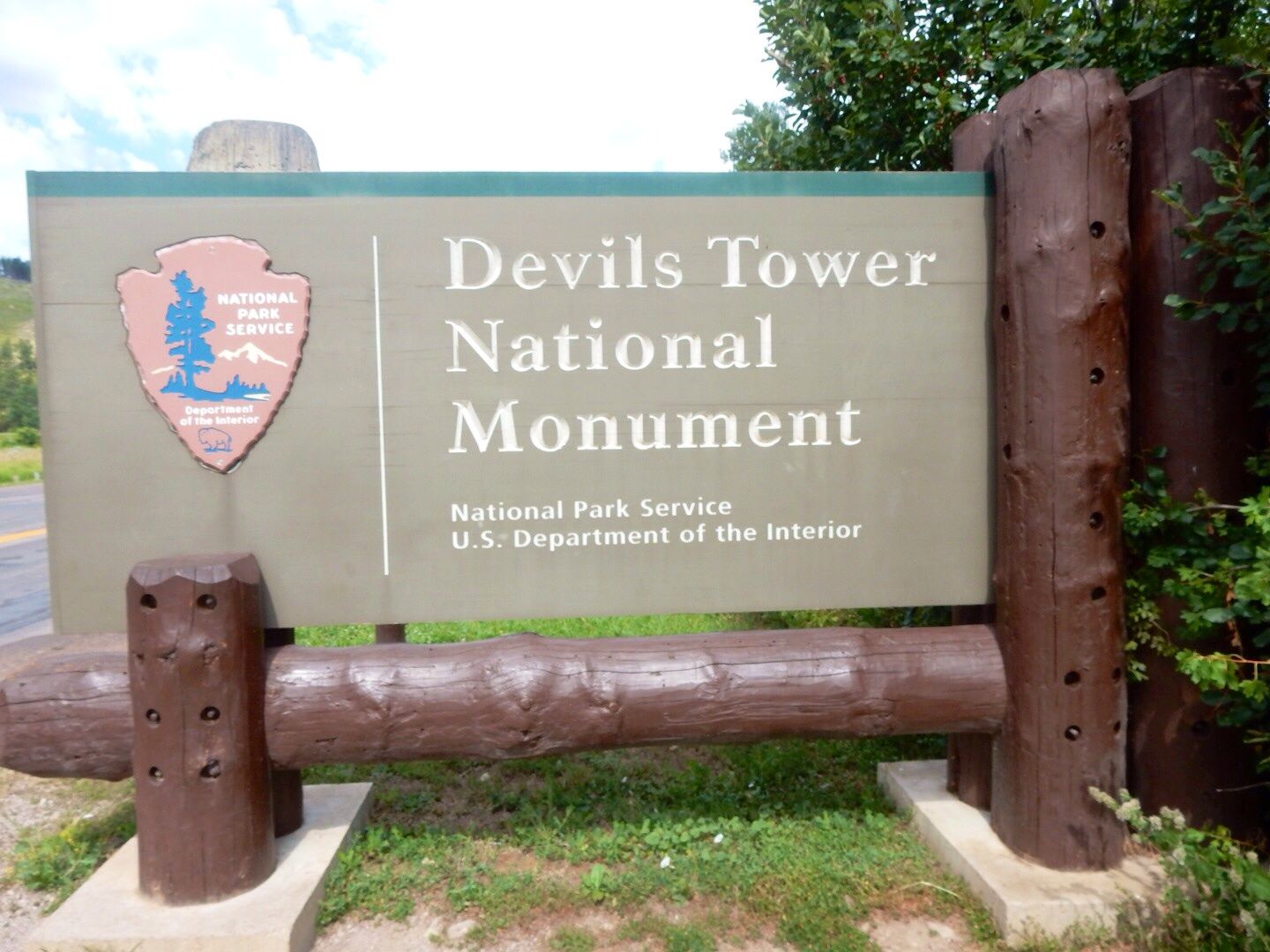
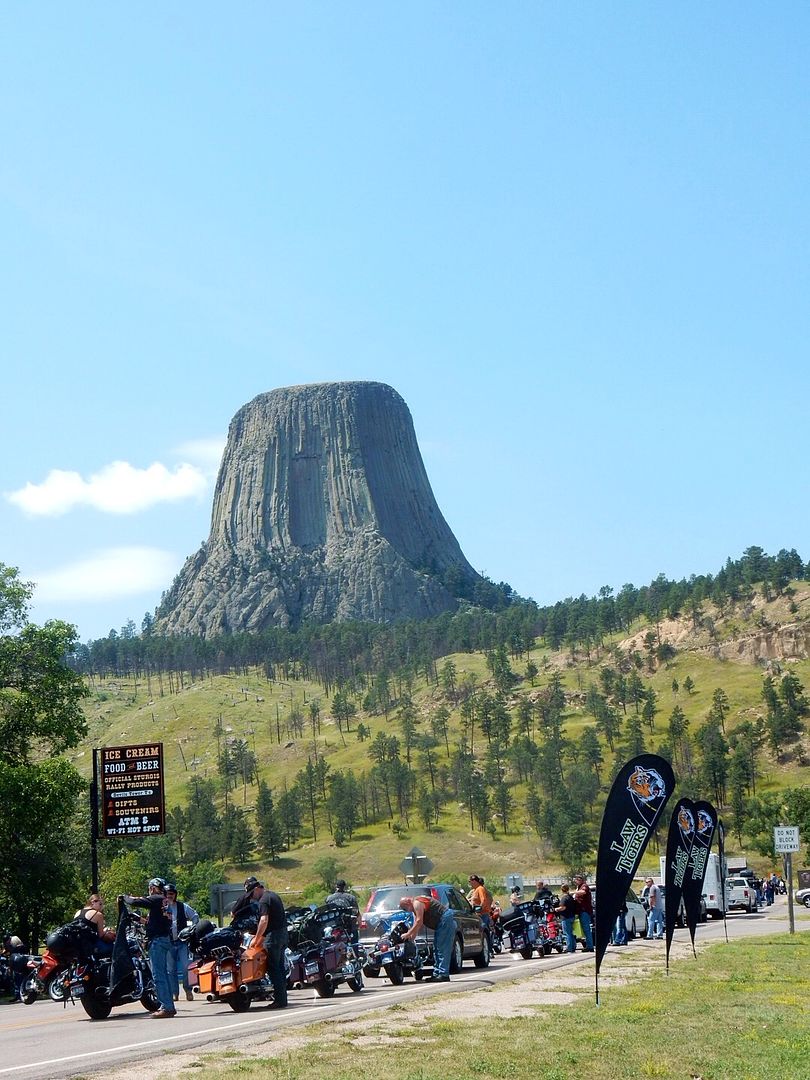
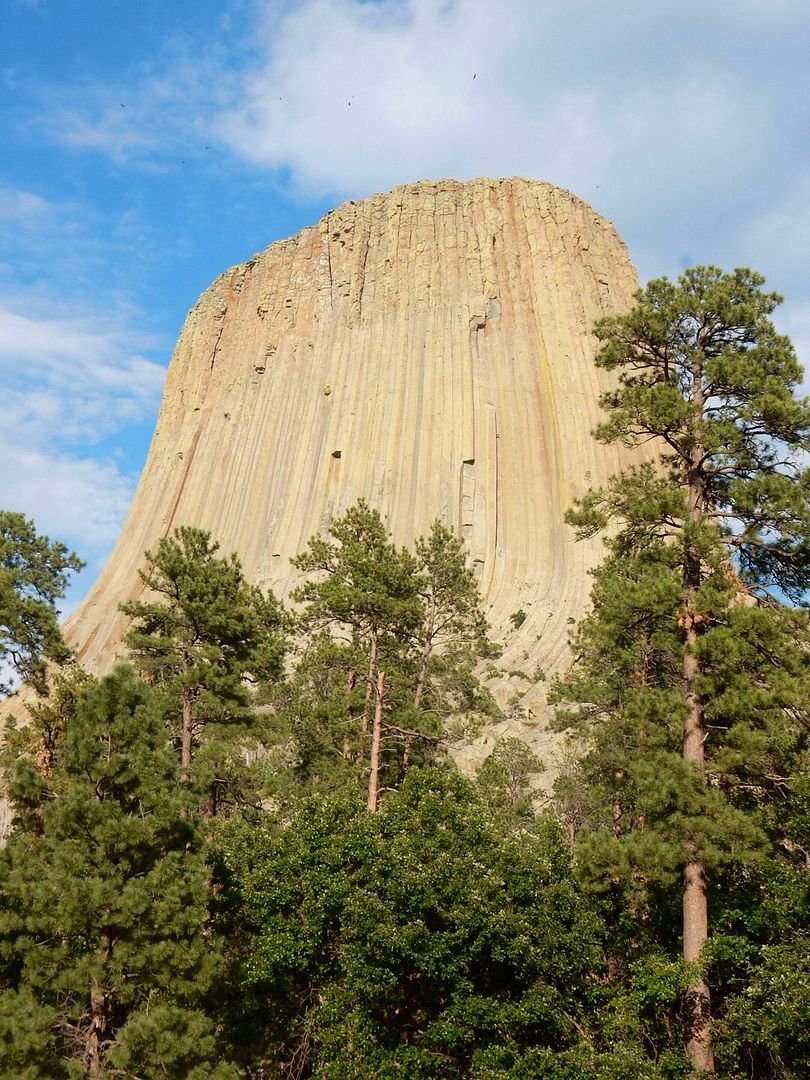
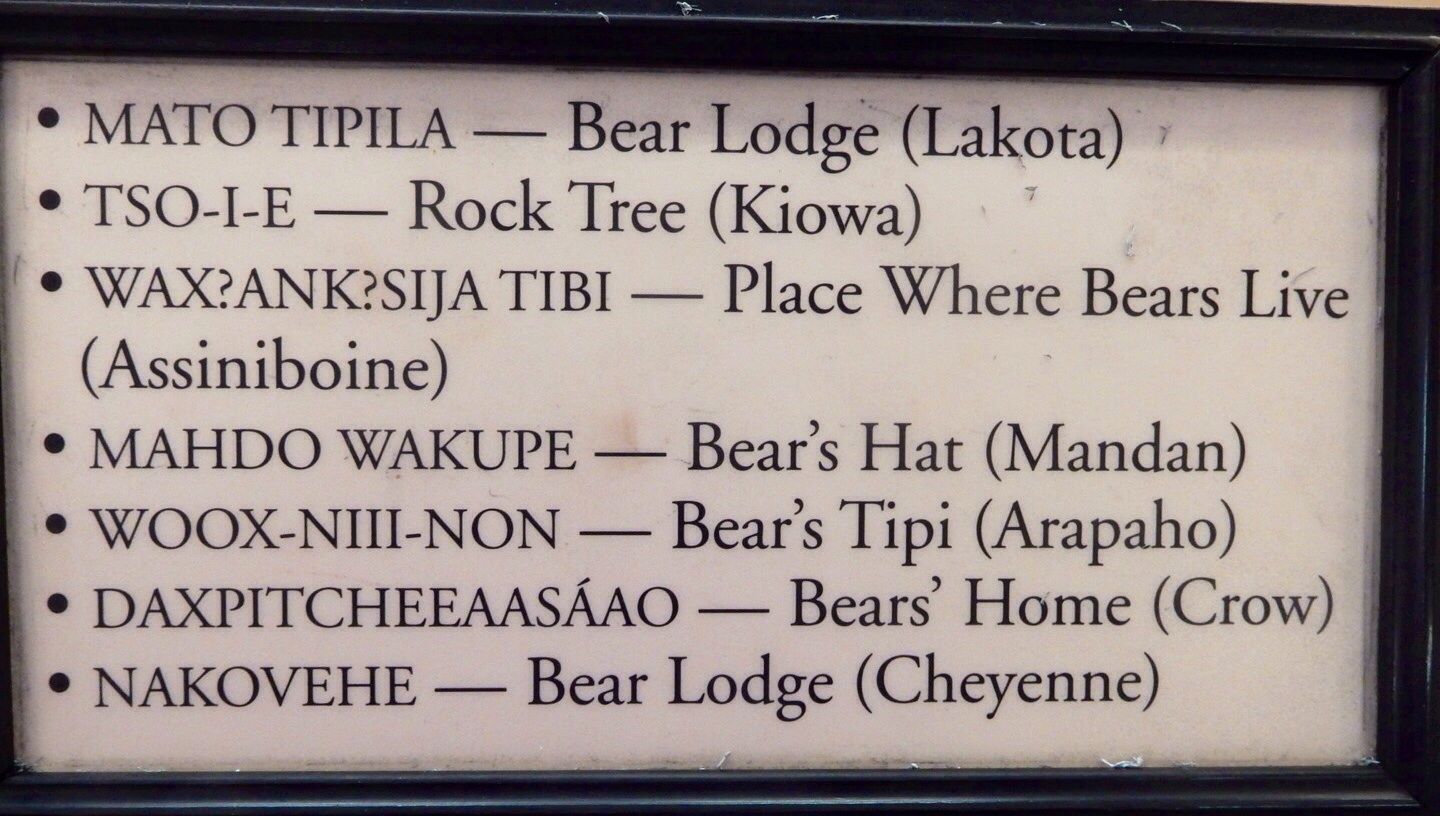
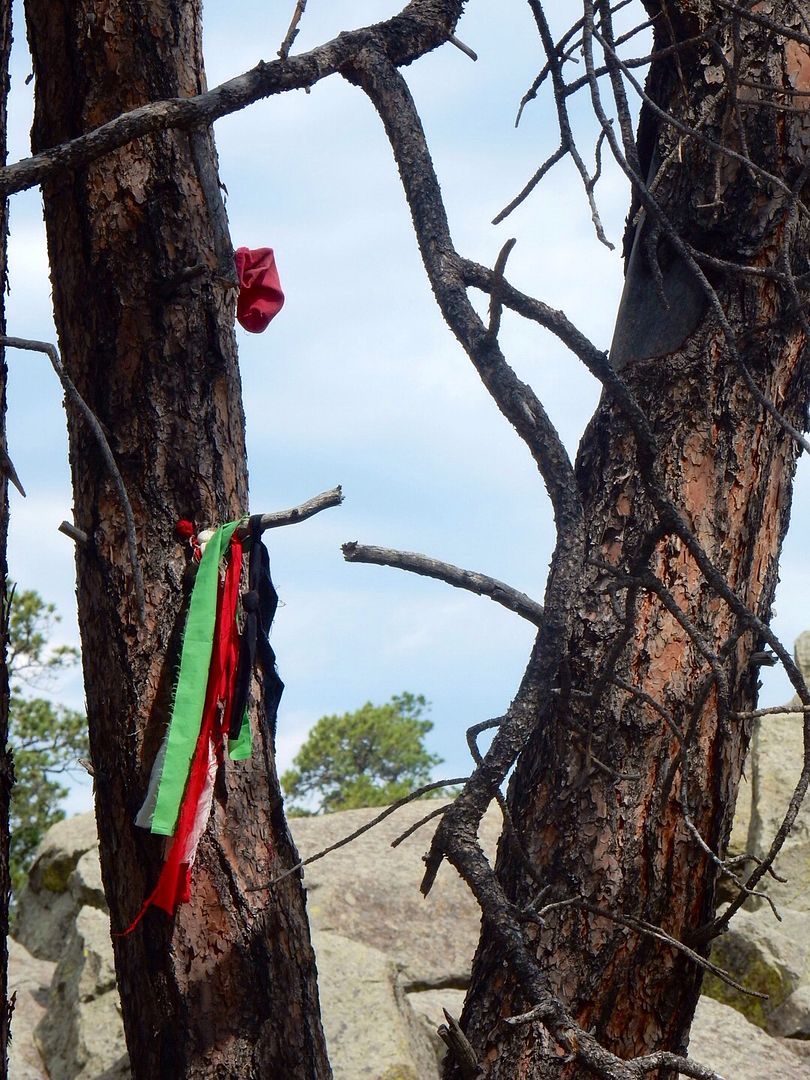



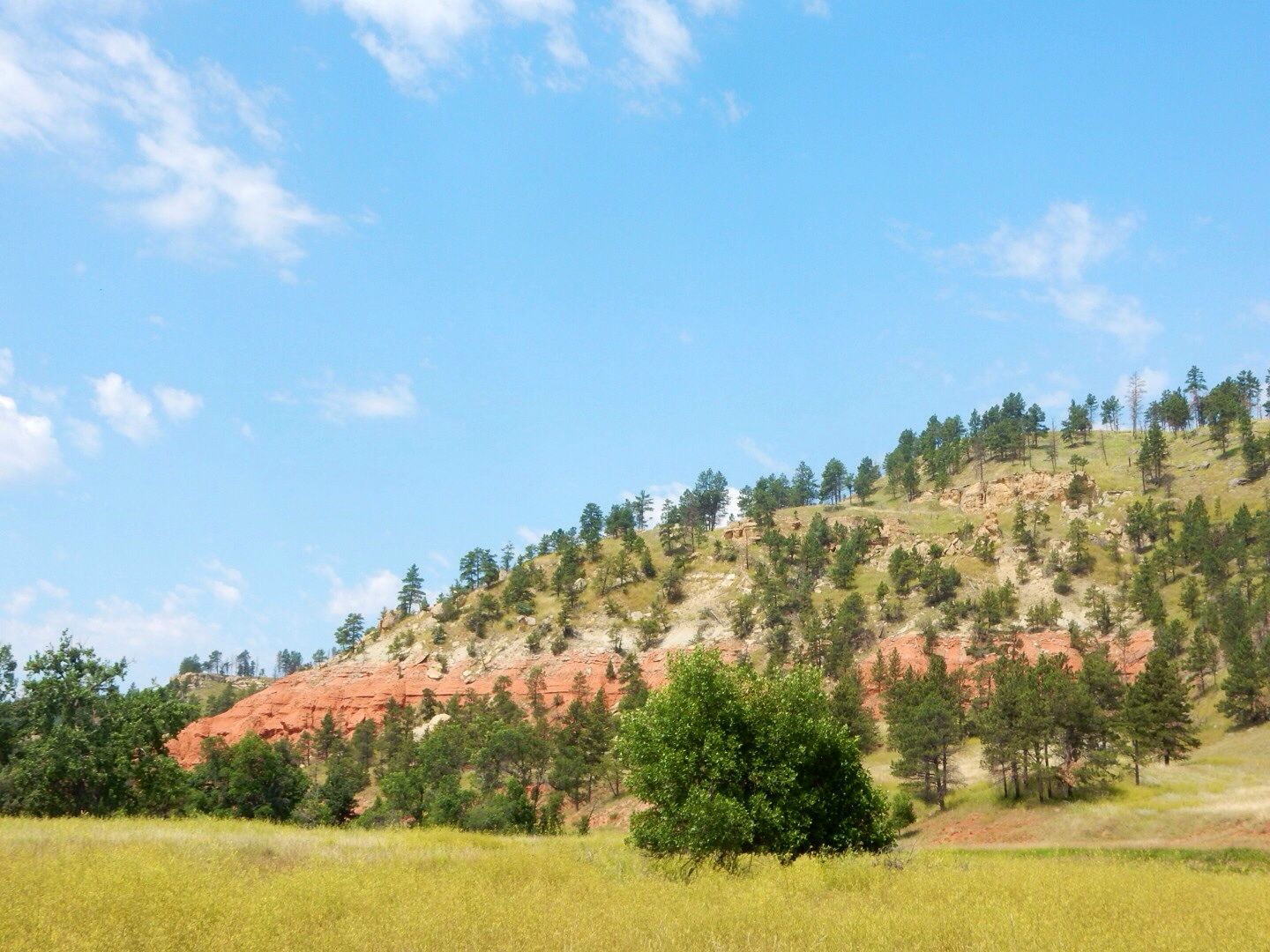
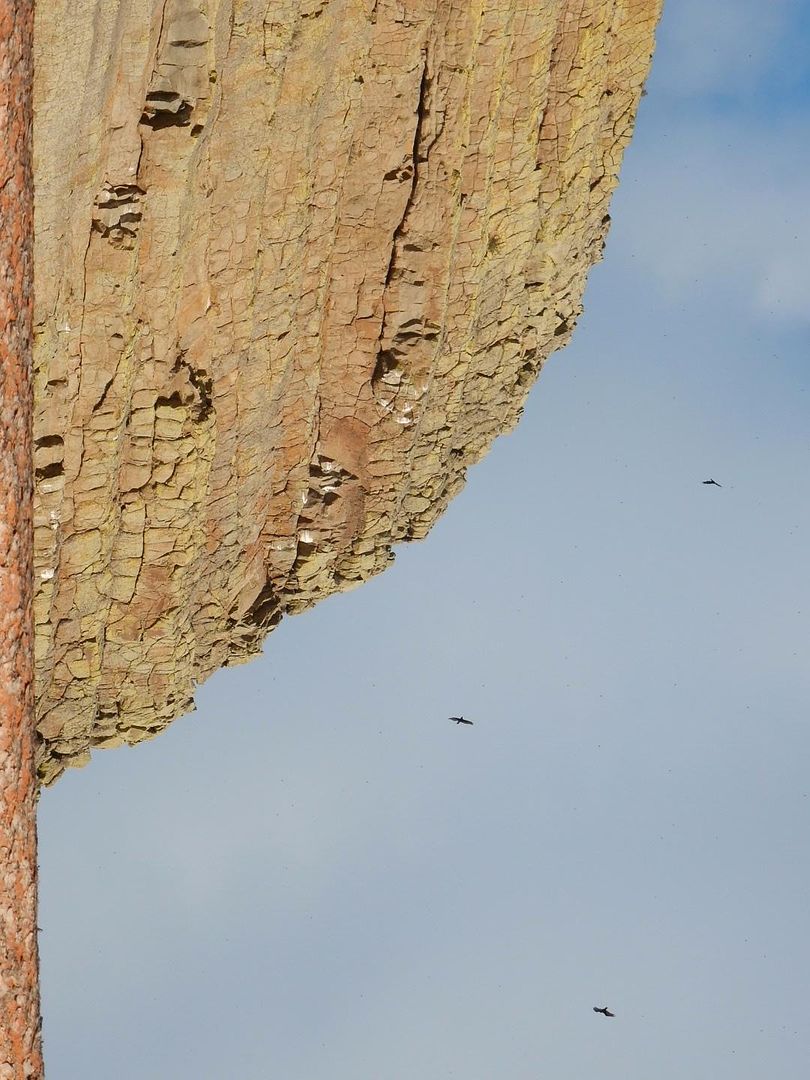


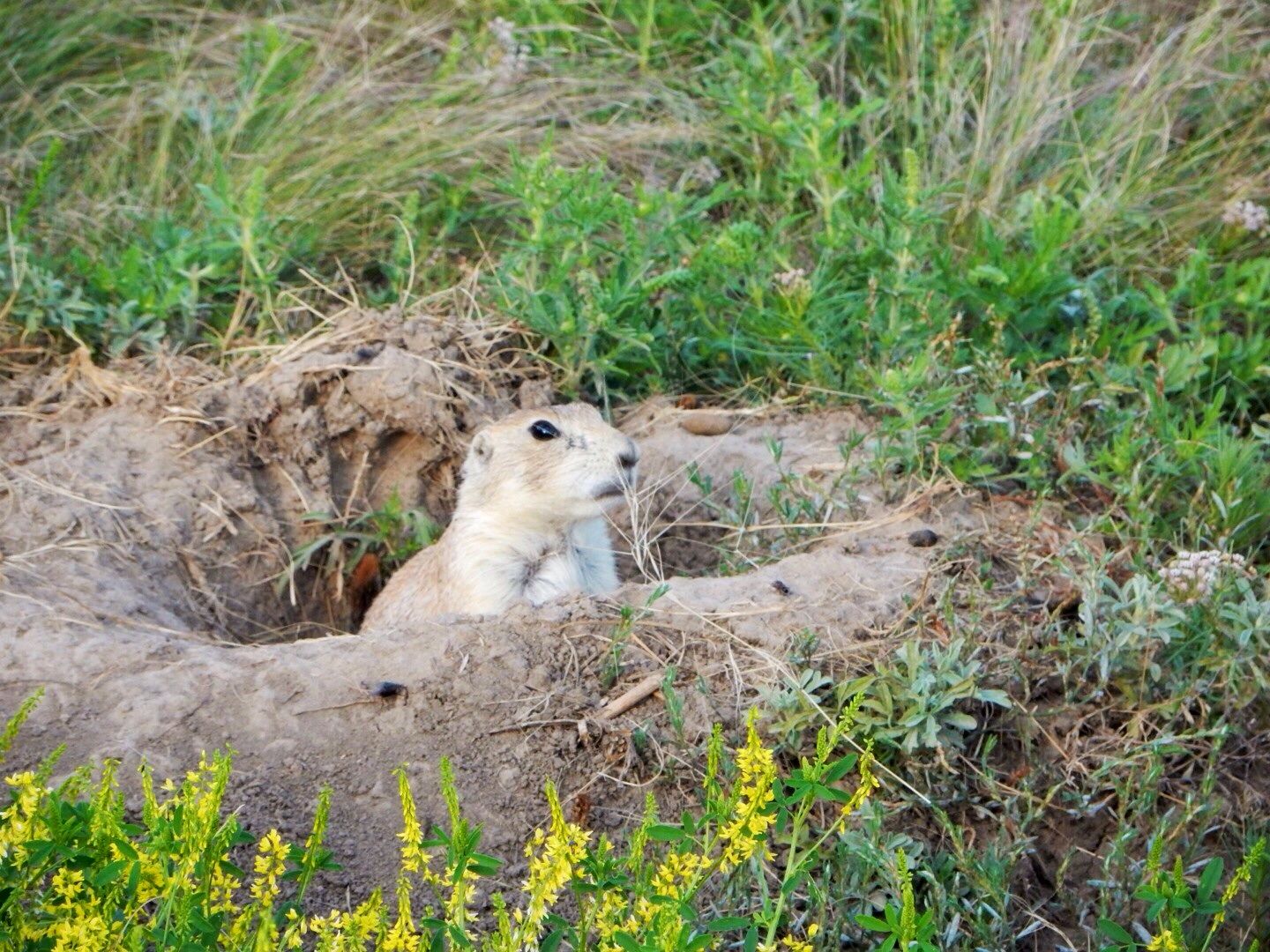
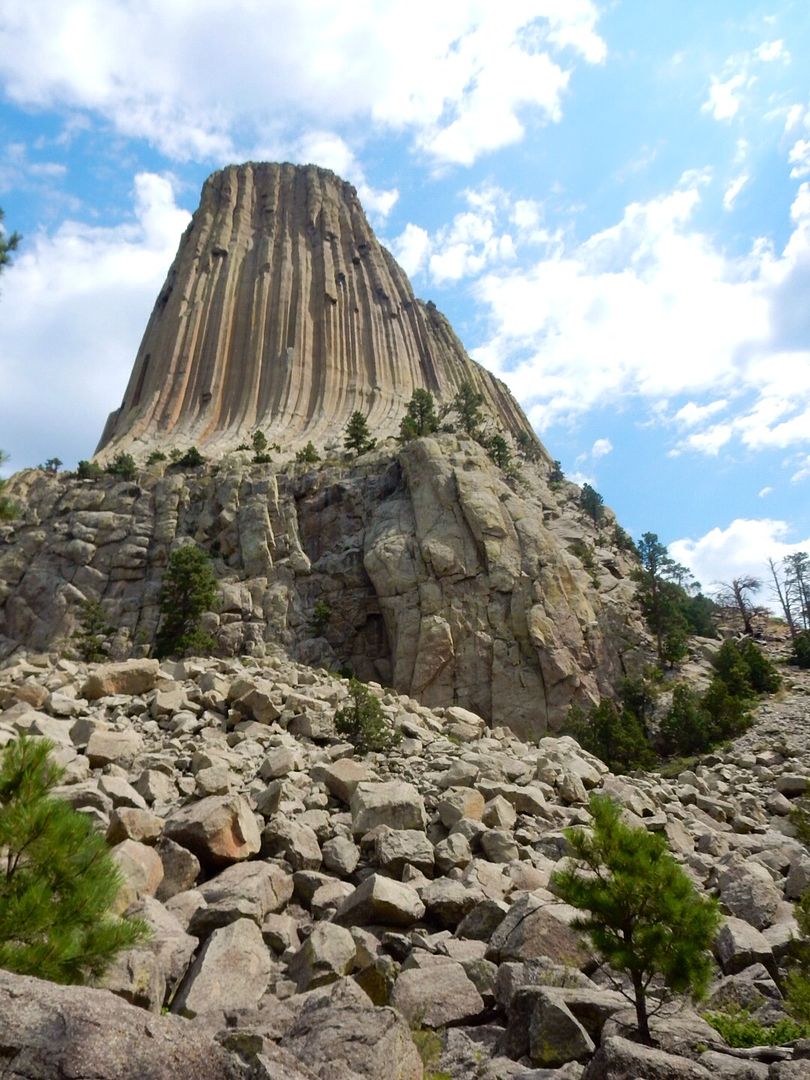
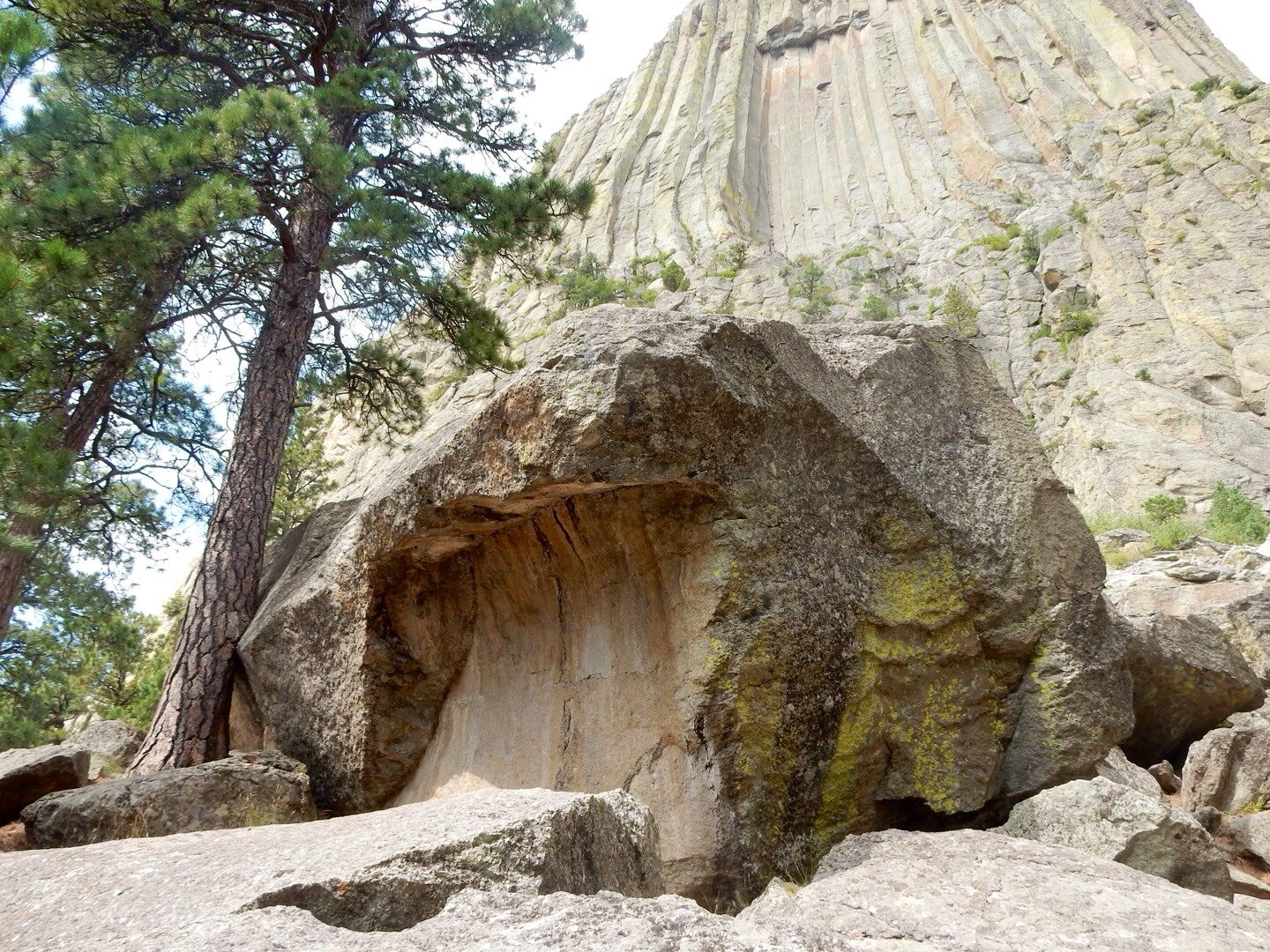

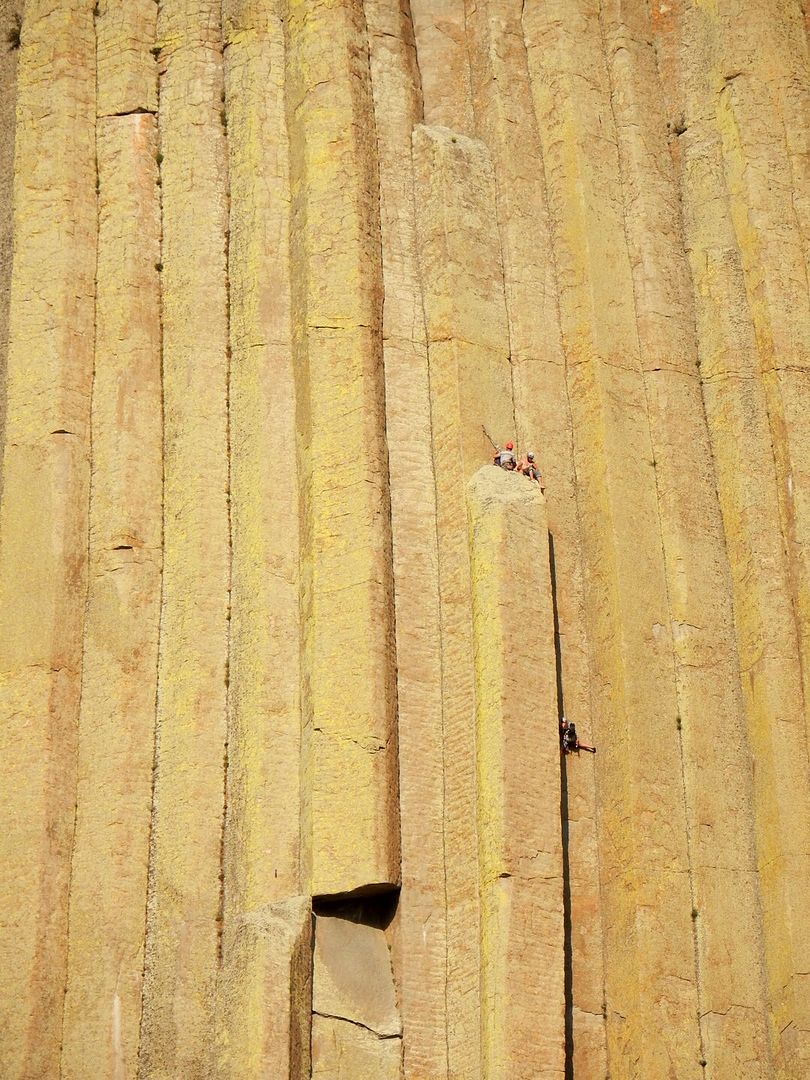

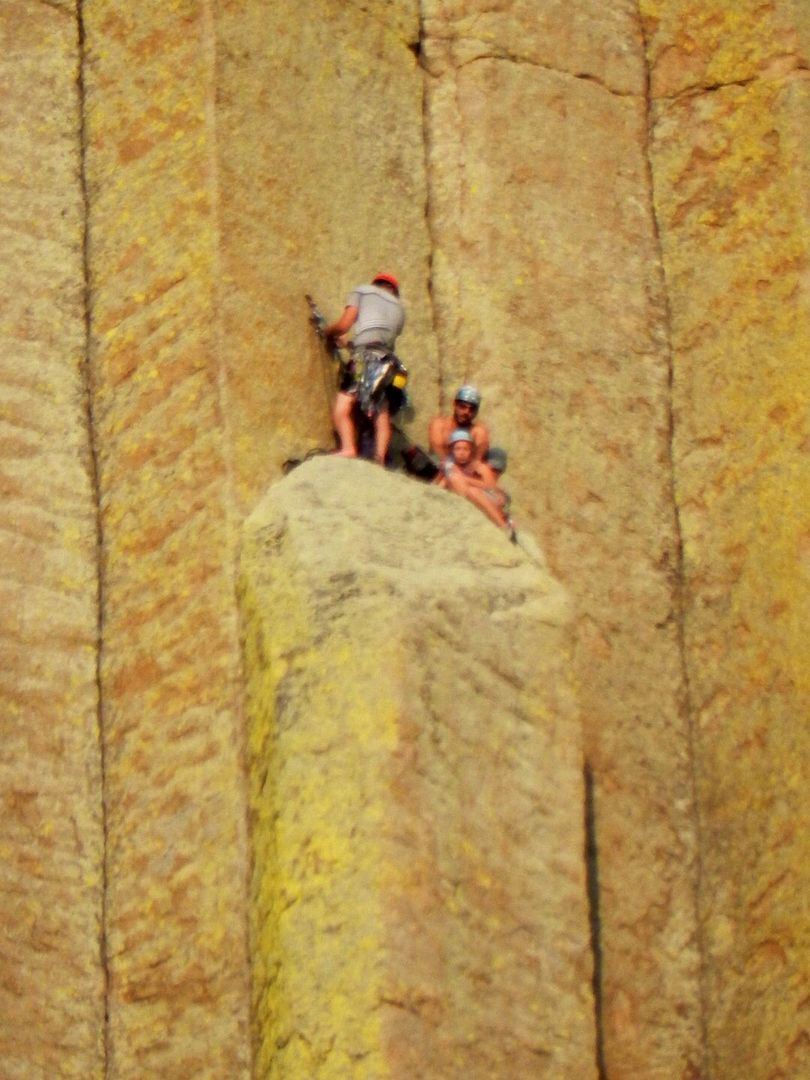

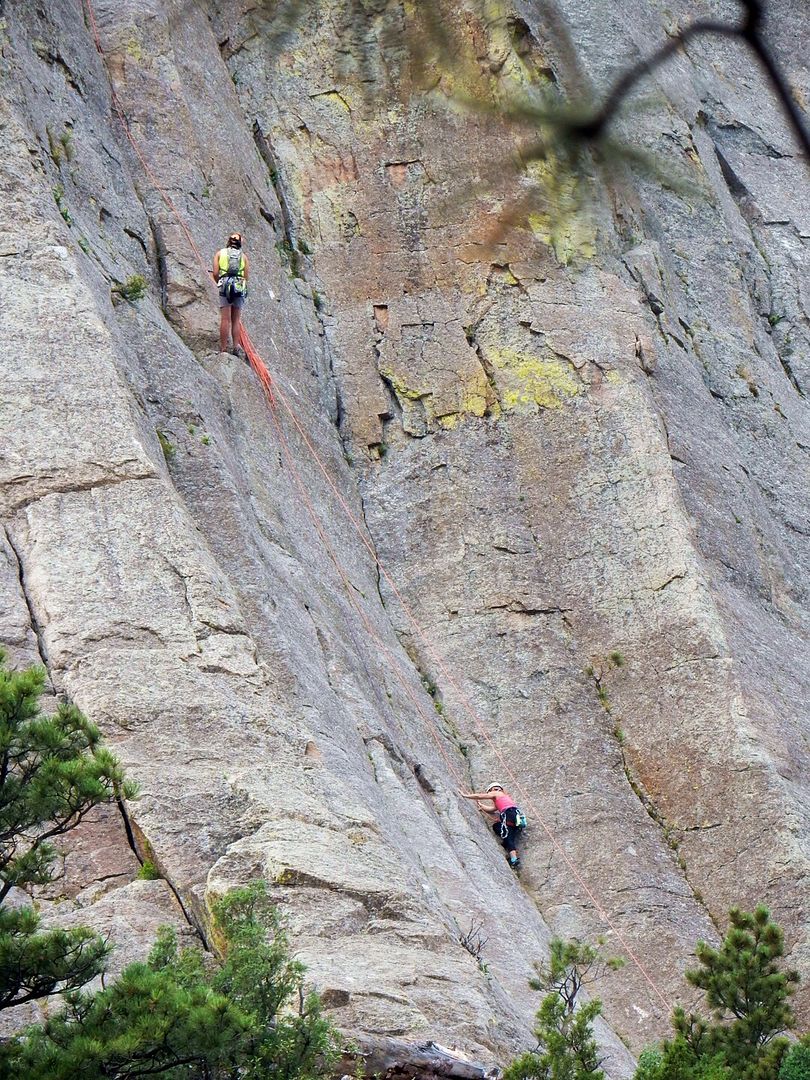
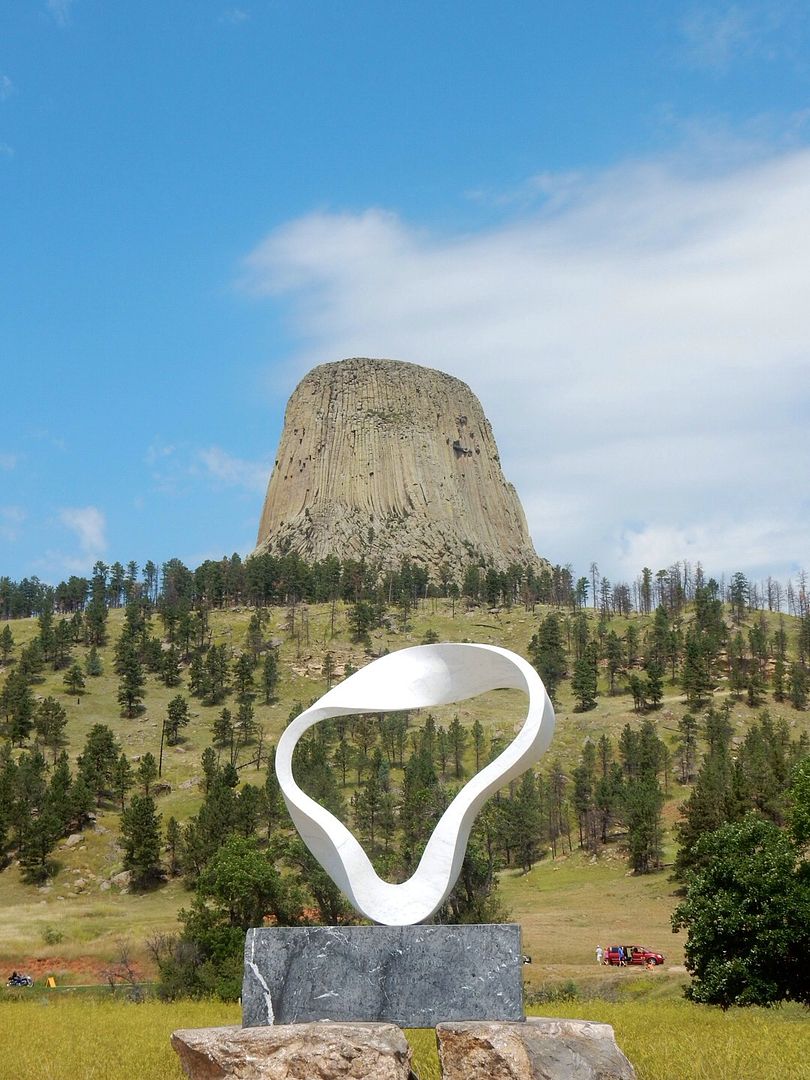
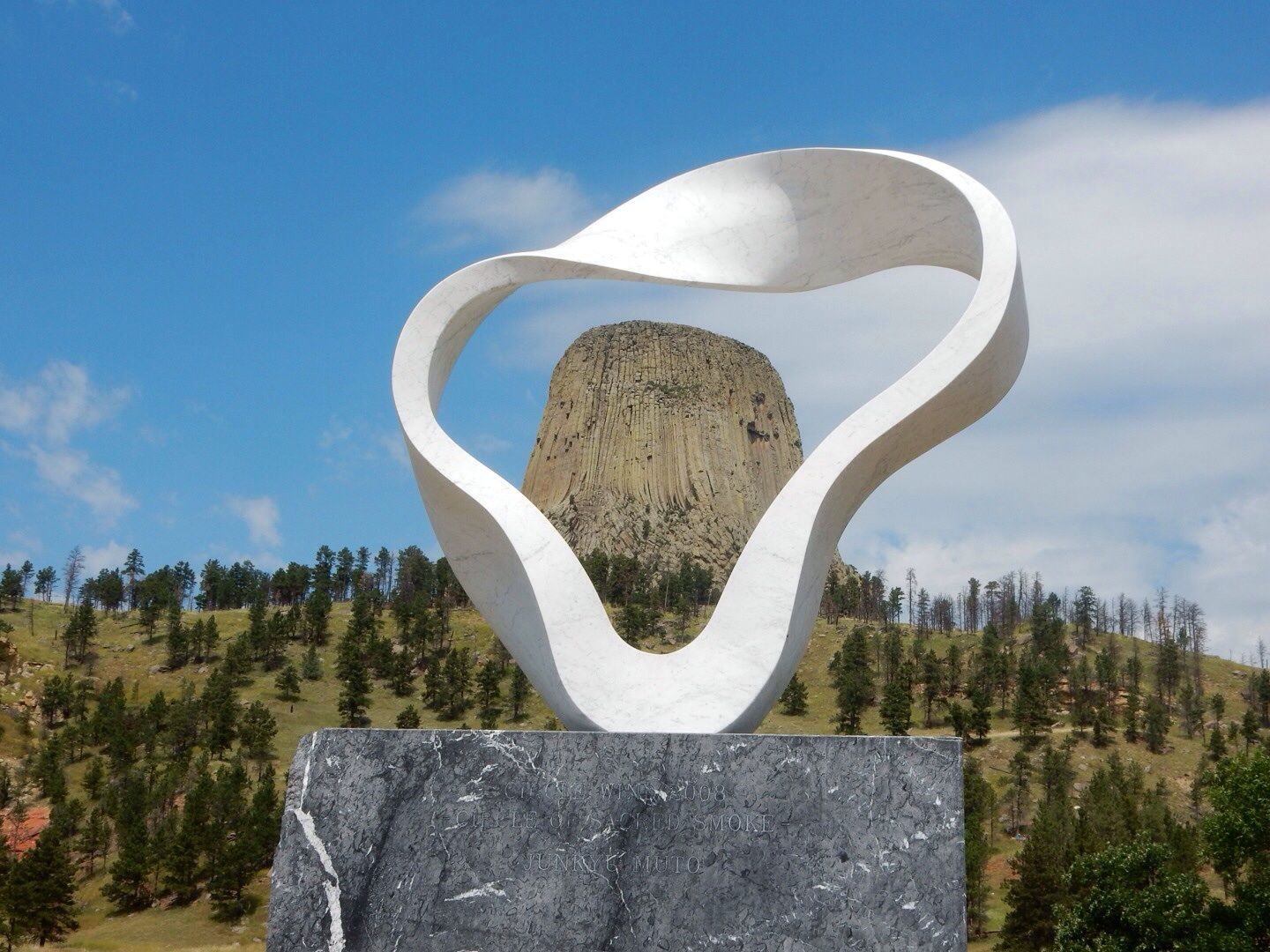
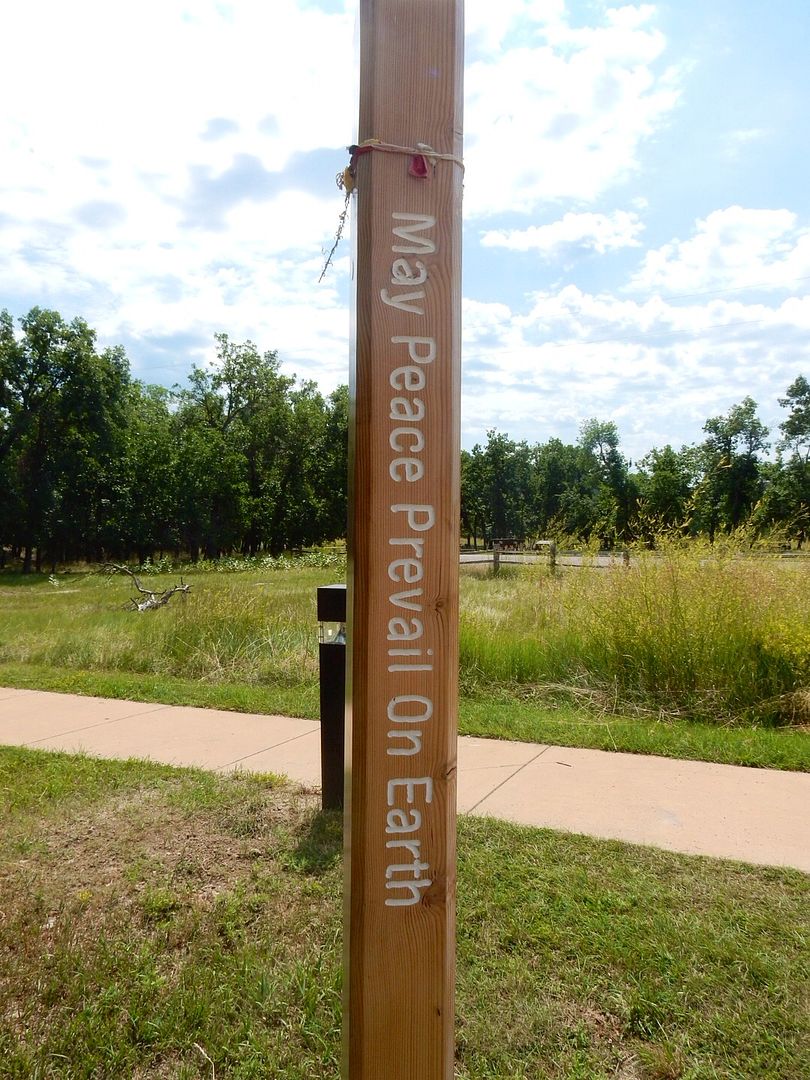
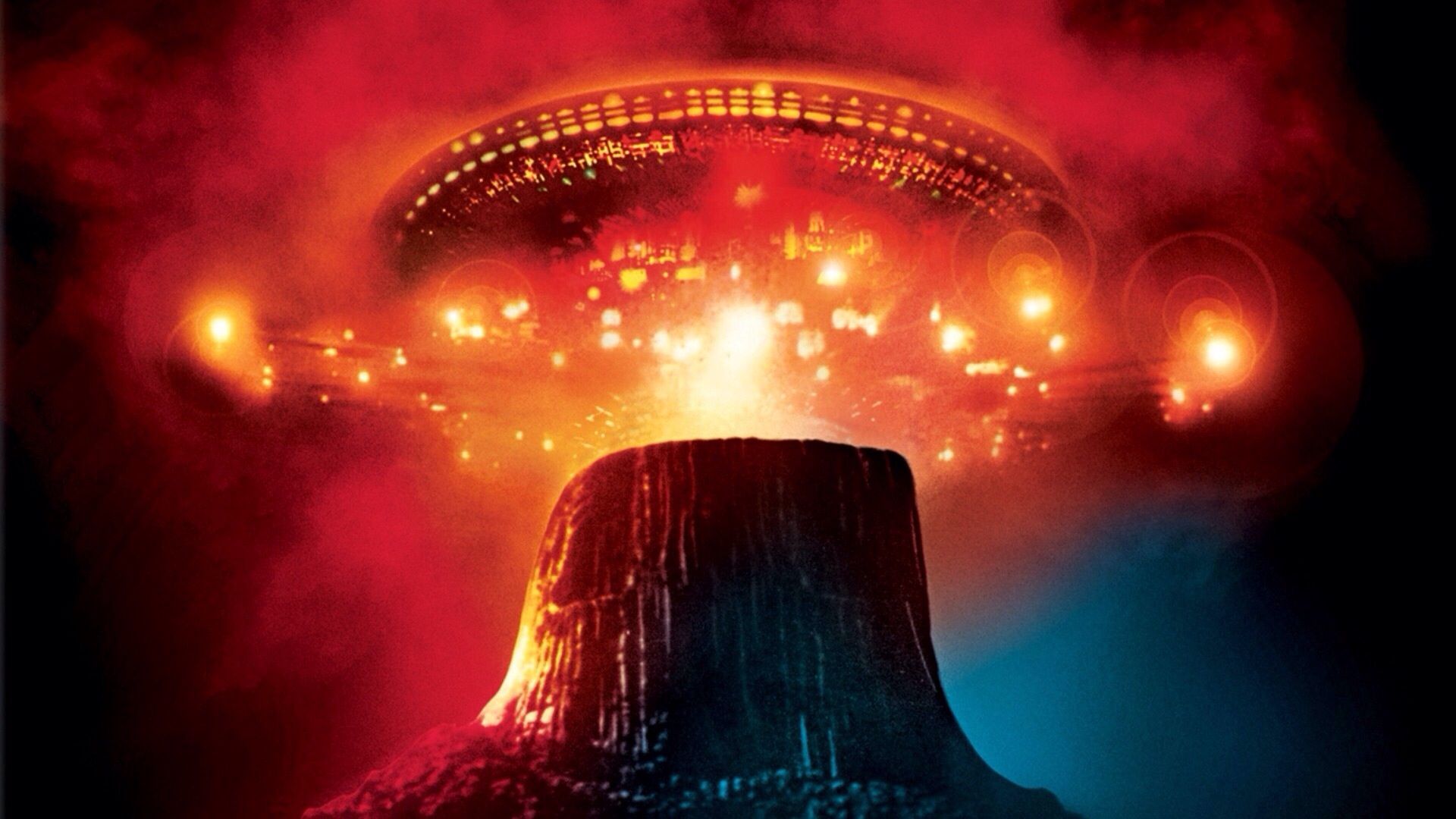
No comments:
Post a Comment